The corrugated bubble wrap market is projected to grow from USD 2.1 billion in 2025 to USD 3.42 billion by 2034, registering a CAGR of 5.44% over the forecast period. This market report covers key trends such as the rising demand for sustainable and eco-friendly packaging solutions, innovations in protective packaging design, and the growing role of AI in manufacturing and supply chain optimization. Segmentation analysis includes corrugated bubble sheets and corrugated bubble bags/mailers. Regional insights encompass North America, Europe, Asia Pacific, Latin America, and the Middle East and Africa, highlighting growth drivers and market dynamics. Competitive analysis covers top players such as Delux Packaging, Conitex Sonoco, Larsan Packaging, and Western Container Corp., including company profiles, product portfolios, and market capitalization.
It offers strong cushioning and shock-absorbing properties, making it ideal for protecting fragile goods during transportation. The e-commerce, electronics, and consumer goods sectors are key end-users, driving consistent adoption. Innovations in packaging design and a global push toward reducing plastic waste have further boosted its appeal. Manufacturers are focusing on enhancing durability and cost-effectiveness to remain competitive. Regulatory support for green packaging and rising consumer awareness around sustainability continue to be significant drivers shaping the future of this market.
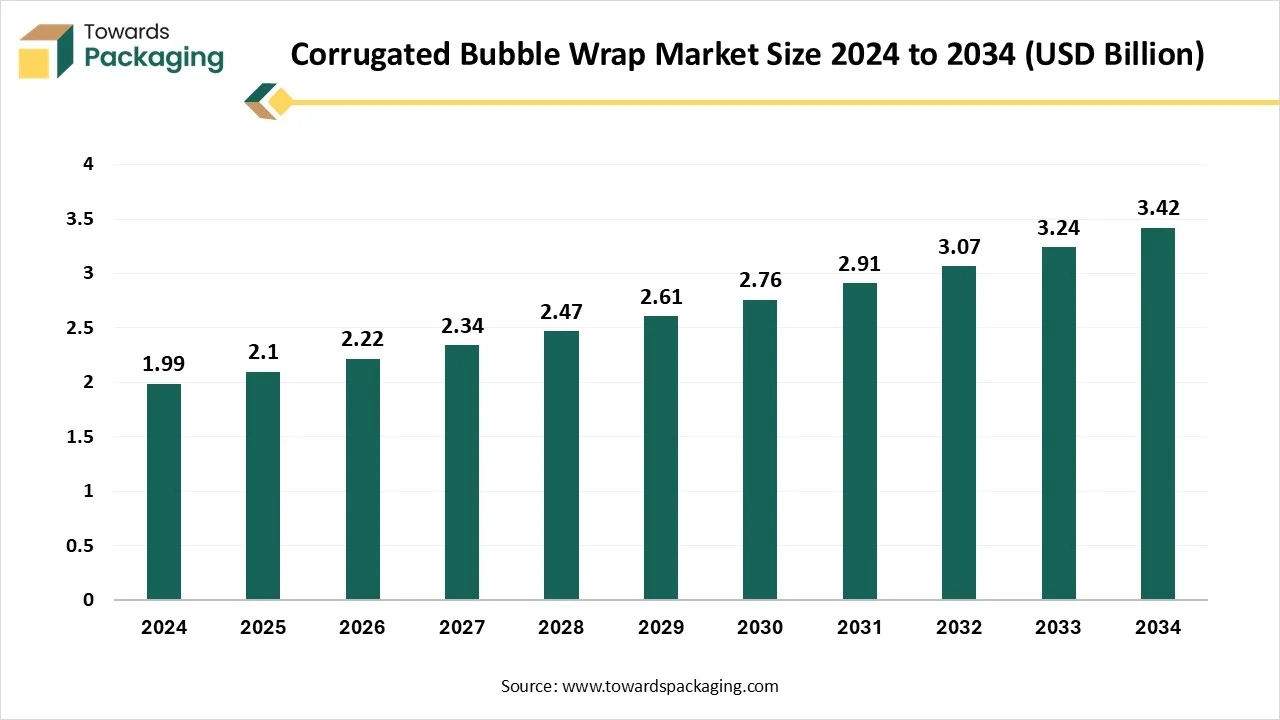
Corrugated bubble wrap is a type of protective packaging material that combines the cushioning properties of traditional bubble wrap with the structural strength of corrugated materials, such as corrugated cardboard or paper. This term can refer to a few variations depending on the specific design. One common form includes bubble wrap with a corrugated outer layer, where a layer of corrugated cardboard is attached to one side of the bubble wrap. This design offers both shock absorption from the bubbles and added rigidity and impact resistance from the corrugated layer, making it ideal for shipping delicate or heavy items.
Another variation uses corrugated kraft paper shaped to mimic the cushioning effect of plastic bubble wrap. This version is often marketed as an eco-friendly alternative, providing a sustainable option for protective packaging. In some cases, the plastic itself in bubble wrap may be manufactured with a corrugated-like structure, incorporating ridges or folds for added strength. Overall, corrugated bubble wrap is valued for combining flexibility and cushioning with enhanced surface protection and stacking strength, and it is commonly used in packaging electronics, glassware, and industrial components.
| Metric | Details |
| Market Size in 2024 | USD 1.99 Billion |
| Projected Market Size in 2034 | USD 3.42 Billion |
| CAGR (2025 - 2034) | 5.44% |
| Leading Region | Asia Pacific |
| Market Segmentation | By Product Type, By End-Use Industries and By Region |
| Top Key Players | Delux Packaging, Inc., Conitex Sonoco, Larsan Packaging Products, Inc., Western Container Corp., Cougar Packaging Solutions, Albert Paper Products, Alpha Packaging Inc. |
AI integration can significantly enhance the corrugated bubble wrap industry by improving manufacturing efficiency, quality control, supply chain management, product customization, and sustainability efforts. In manufacturing, AI enables predictive maintenance by monitoring machinery such as extrusion and corrugation equipment, allowing manufacturers to identify and address potential failures before they lead to costly downtime. Machine learning algorithms can also optimize production settings, such as temperature, pressure, and feed rate, reducing material waste and increasing throughput.
Robotics guided by AI and computer vision can automate the inspection and packaging processes, ensuring greater consistency and speed on the production floor. Quality control is another critical area where AI adds value. Computer vision systems can detect defects like misaligned corrugation, inconsistent bubble inflation, or tears in real time, helping maintain high product standards. These systems also ensure uniformity in bubble size, shape, and material thickness, which are essential for the protective performance of bubble wrap.
In terms of supply chain and inventory management, AI improves operational efficiency by forecasting demand using historical sales data and current market trends. This allows for better inventory control, reducing overproduction or shortages. AI can also assist in dynamic pricing strategies based on real-time supply and demand fluctuations, as well as changes in raw material costs. AI further enables product customization and innovation by analyzing customer data to develop tailored packaging solutions for specific products, such as fragile electronics or heavy industrial components. It also supports research and development efforts to create new, more sustainable materials through simulation and design optimization.
Sustainability is increasingly important, and AI contributes by identifying ways to reduce plastic usage without compromising the performance of bubble wrap. Image recognition can be used to sort and recycle manufacturing scraps more efficiently, while AI models can evaluate the carbon footprint of various production strategies to support greener practices. Finally, AI enhances the customer experience by powering chatbots and digital portals that facilitate customized orders, delivery tracking, and issue resolution. It can also analyze customer feedback to inform product improvements and better align with market needs. Altogether, AI represents a transformative force that can drive the corrugated bubble wrap industry toward greater efficiency, innovation, and environmental responsibility.
Growth Online Retail Business & Logistics Global Trade
The rapid expansion of e-commerce platforms like Amazon, Alibaba, and Shopify has significantly increased the demand for protective packaging. Corrugated bubble wrap offers cushioning and rigidity, making it ideal for shipping delicate or valuable goods across long distances. As more consumers shop online, especially for electronics, cosmetics, and fragile household items, the need for reliable protective packaging grows. As global trade and logistics services expand, there is a higher volume of goods being shipped both internationally and domestically. This drives demand for packaging materials that ensure product safety during transit, especially in industries like electronics, pharmaceuticals, and industrial machinery.
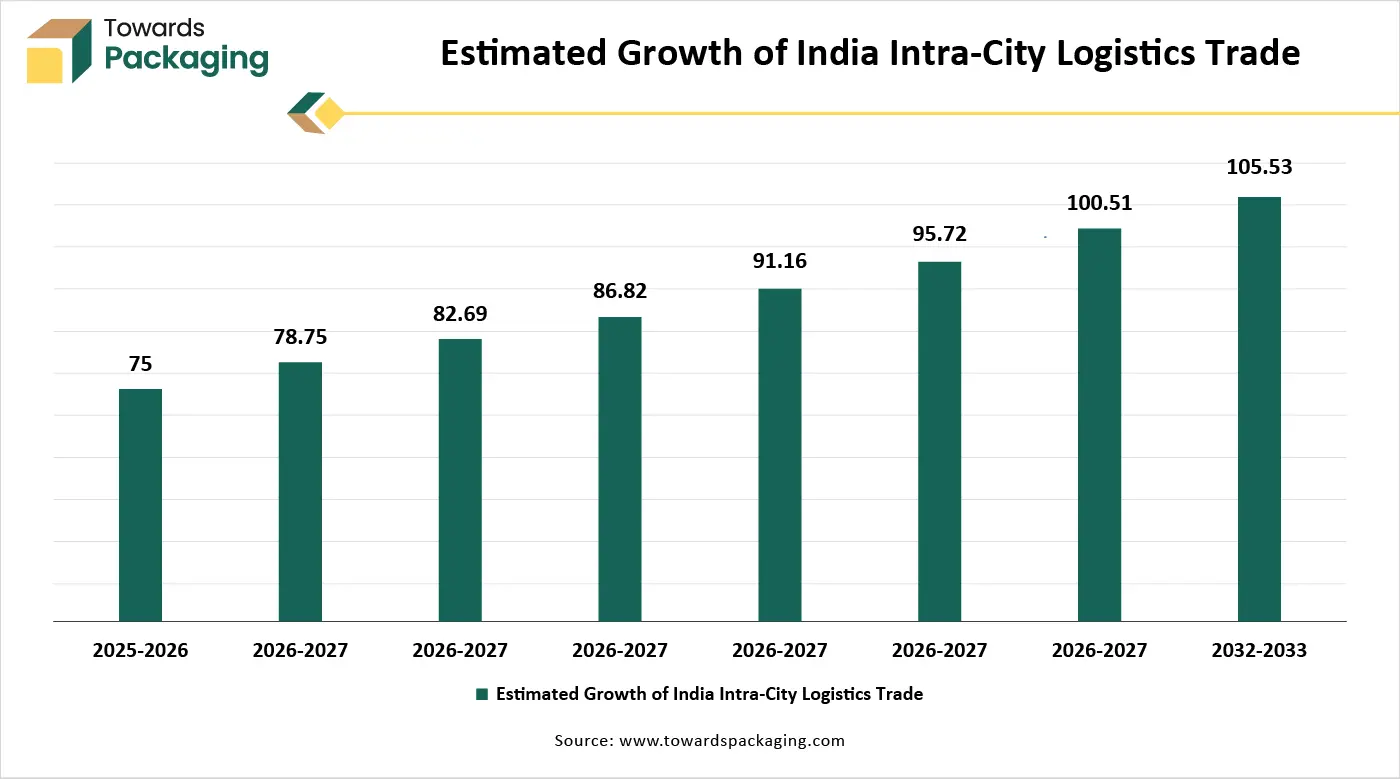
Limited Protective Capability and Slow Adoption of Sustainable Packaging
The key players operating in the corrugated bubble wraps market are facing issues due to the availability of alternative options and bulkiness, and storage challenges. Corrugated bubble wrap, though eco-friendlier, often lacks the same level of moisture resistance, flexibility, and durability as traditional plastic bubble wrap. This makes it less suitable for heavy, sharp, or high-moisture products, limiting its adoption in certain sectors like food packaging or heavy industrial equipment. Corrugated bubble wrap tends to be bulkier and less compressible than plastic alternatives. This creates storage and transportation inefficiencies, increasing warehousing and shipping costs.
Corrugated bubble wrap is often seen as a more sustainable alternative to traditional plastic bubble wrap, especially when made with recycled paper and biodegradable materials. Rising consumer and regulatory pressure to reduce plastic waste is pushing companies to adopt eco-friendly packaging solutions, thus driving growth in the corrugated bubble wrap segment.
The corrugated bubble wrap market benefits from ongoing innovation in material design and structure, offering products that are lightweight, strong, recyclable, and customizable. Manufacturers can create wraps tailored to specific applications, whether it's electronics, glassware, or automotive parts, increasing the material’s appeal across sectors.
Companies are under pressure to minimize product returns and damages, which can be costly and harmful to brand reputation. Corrugated bubble wrap provides both cushioning and structural support, reducing the likelihood of transit damage and offering a cost-effective solution for damage prevention.
More small businesses and startups are entering the market with direct-to-consumer (DTC) models. These businesses require affordable, customizable, and eco-conscious packaging materials, which makes corrugated bubble wrap an ideal choice for shipping goods directly to customers.
Governments and international bodies are introducing regulations to curb plastic waste and promote recyclable materials. Such policies are encouraging businesses to switch to paper-based or biodegradable packaging, which directly boosts demand for corrugated bubble wrap.
The corrugated bubble sheets segment holds a dominant presence in the market due to its excellent shock absorption property and lightweight nature. Corrugated bubble sheets are popular in packaging due to their excellent shock absorption, combining air-filled bubbles with a corrugated structure to protect fragile items during transit. Lightweight and cost-effective, they help reduce shipping costs while minimizing damage-related expenses. Their flexibility allows them to wrap around various product shapes, making them ideal for items like electronics, glassware, and automotive parts. Made from moisture-resistant plastics, they also guard against scratches, spills, and humidity. Additionally, some variants are recyclable or reusable, contributing to environmental sustainability. With mild insulating properties and customizable options in size and thickness, corrugated bubble sheets offer a versatile, efficient packaging solution. Their durability, adaptability, and protective features make them a reliable choice across many industries.
The corrugated bubble bags/mailers are extensively used for packaging due to their lower cost, protective nature, and convenience. These mailers are designed with a layer of bubble wrap for cushioning and a corrugated outer layer for added rigidity and durability. This dual structure protects items from impacts, compression, and punctures during shipping, making them ideal for fragile or valuable products such as electronics, cosmetics, books, and accessories. They are also lightweight, helping to lower shipping costs, and pre-formed, which makes them easy and fast to pack, saving time in fulfillment centers. Many are also water-resistant and tamper-evident, offering additional security. With recyclable and eco-friendly options available, corrugated bubble mailers are a sustainable and reliable choice for e-commerce and logistics.
The electronics and electrical segment accounted for the dominant revenue share of the corrugated bubble wrap market in 2024. Corrugated bubble packaging is extensively used for electronics and electrical products because it offers superior protection, insulation, and handling convenience—all critical for delicate and high-value items. Firstly, the bubble layer provides excellent shock absorption, which protects sensitive components from mechanical shocks, vibrations, and drops during transit. This is essential for preventing internal damage to circuit boards, chips, and other fragile parts. The corrugated outer layer adds structural strength, shielding against external pressure and punctures. Additionally, this packaging can be made from anti-static or ESD (Electrostatic Discharge) materials, which is crucial for electronics, as static discharge can damage or destroy sensitive components. Corrugated bubble packaging is also lightweight, reducing shipping costs, and customizable to fit different device shapes and sizes, ensuring a snug, secure fit. Its moisture resistance protects electronics from humidity and minor water exposure, while its clean, dust-free surface keeps devices contamination-free. All these factors make corrugated bubble packaging an ideal, reliable, and efficient solution for electronics and electrical applications.
Asia Pacific held the largest share of the corrugated bubble wrap market in 2024, owing to the booming e-commerce sector and cost-effective production. Rapid growth of online shopping, especially in countries like China, India, and Southeast Asian nations, has created high demand for protective packaging like corrugated bubble wrap to safely deliver goods. The region is a global hub for manufacturing, especially in electronics, consumer goods, automotive, and industrial equipment, all of which require protective packaging during storage and transit. Asia Pacific offers lower production and labor costs, making it attractive for manufacturers of packaging materials, including corrugated bubble wrap.
A large and growing consumer base, coupled with rapid urbanization, increases demand for packaged goods, which in turn drives the need for effective packaging solutions. Ongoing investments in logistics and warehousing infrastructure support efficient distribution and supply chains, further promoting the use of protective packaging. Increasing awareness around sustainable packaging is encouraging regional companies to innovate with recyclable or eco-friendly corrugated bubble wraps, enhancing market appeal. Pro-manufacturing policies and export incentives in countries like China, India, and Vietnam are fostering growth in packaging material production and global supply.
China Market Trends
China's corrugated bubble wrap market is growing due to its massive manufacturing base for electronics, consumer goods, and industrial equipment, all of which require protective packaging. China country has low production costs, strong logistics infrastructure, and government support for export-driven growth. Rising e-commerce and focus on eco-friendly packaging materials are further fueling demand in China. China is the market leader in production and export.
India Market Trends
India's corrugated bubble wrap market is growing, owing to its rapidly expanding e-commerce, retail, and electronics sectors are driving significant demand for protective packaging solutions like corrugated bubble wrap. A growing middle class, increased smartphone and internet penetration, and a large logistics and delivery network in India support the market growth. Increasing interest in domestic manufacturing and ‘Make in India’ initiatives is also boosting the packaging industry investments.
Japan Market Trends
Japan has a mature packaging industry with a focus on precision, quality, and sustainability. Japan has a high-tech and quality-driven market. Strong demand from electronics, automotive, and healthcare sectors in Japan drives the growth of the corrugated bubble wrap market. Also known for adopting environmentally responsible packaging. Emphasis on recyclable and biodegradable materials in line with national environmental goals drives the growth of the corrugated bubble wrap market.
South Korea Market Trends
The South Korea corrugated bubble wrap market is driven by the presence of the advanced electronics hub in the country. South Korea is a global leader in semiconductors, consumer electronics, and telecom equipment, all of which require safe packaging during shipment. In South Korea, high R&D spending and demand for anti-static and shock-resistant packaging fuel the market growth. Innovations in smart and sustainable packaging are gaining momentum in South Korea, which is a key factor for market growth.
North America is the fastest-growing region in the corrugated bubble wrap market due to several key factors. The rapid expansion of e-commerce has driven demand for protective packaging, especially for electronics and fragile goods. A well-developed logistics infrastructure supports efficient distribution, boosting the need for reliable packaging. Growing environmental awareness has led to increased use of recyclable and biodegradable bubble wrap, aligning with consumer preferences and regulations. Technological advancements, such as automation and customizable solutions, enhance production efficiency and product quality. Additionally, a significant number of consumers are willing to pay more for sustainable packaging, with 82% favouring eco-friendly options, especially among younger buyers.
U.S. Market Trends
The U.S. holds the largest share of the North American corrugated bubble wrap market. A strong online retail sector (Amazon, Walmart, etc.) fuels demand for protective packaging. U.S. companies are rapidly adopting eco-friendly materials in response to consumer and regulatory pressures. Technological advancements in packaging design and materials are frequently developed and adopted here. High demand from electronics, automotive, and medical device sectors.
Canada Market Trends
Canada's market is growing steadily, driven by increased e-commerce and cross-border trade. Provincial regulations are pushing companies toward biodegradable and recyclable packaging. Rising urban populations and improvements in logistics are supporting market expansion. Growth of online and omnichannel retail fuels bubble wrap usage in Canada.
The Europe region is expected to grow at a notable rate in the foreseeable future. The surge in online retail across Europe has significantly increased the demand for protective packaging solutions. Bubble wrap, known for its lightweight and cushioning properties, is widely used to safeguard fragile items during transit. Countries like the Netherlands and France are witnessing notable growth in bubble wrap packaging due to the booming e-commerce sector. Additionally, advancements in automated packaging systems are enabling faster and more efficient packaging processes.
Environmental concerns are prompting European manufacturers to develop eco-friendly packaging solutions. The adoption of recyclable and biodegradable bubble wrap is on the rise, aligning with the European Union's stringent regulations on plastic waste reduction. Germany, in particular, is at the forefront of this shift, with increasing importance placed on sustainable materials in the packaging industry. Innovations in packaging materials are enhancing the efficiency and effectiveness of bubble wrap. Manufacturers are developing lighter, stronger, and more puncture-resistant bubble wraps, catering to the growing demand for high-quality protective packaging.
The European Union's regulations on plastic waste and packaging materials are encouraging manufacturers to adopt sustainable alternatives. These regulations are prompting companies to develop biodegradable bubble wrap made from recycled materials, such as kraft paper and agricultural waste. The presence of stringent regulations in countries like Germany, Italy, France, and the United Kingdom is driving the growth of the bubble wrap packaging market in Europe. Furthermore, Europe's strong industrial base, particularly in sectors like electronics, automotive, and pharmaceuticals, is fueling the demand for protective packaging. The need to ensure the safe transportation of goods is driving the adoption of bubble wrap packaging solutions. Countries such as Germany and the United Kingdom, with their well-developed logistics and manufacturing sectors, are key markets within Europe.
The corrugated packaging market is expected to expand from USD 309.86 billion in 2025 to USD 444.85 billion by 2034, growing at a CAGR of 4.10% from 2025 to 2034. Rapid expansion in online retail and the need for sturdy, cost-effective shipping solutions drive strong demand. Growing environmental regulations also push companies to adopt eco-friendly alternatives, fueling market growth.
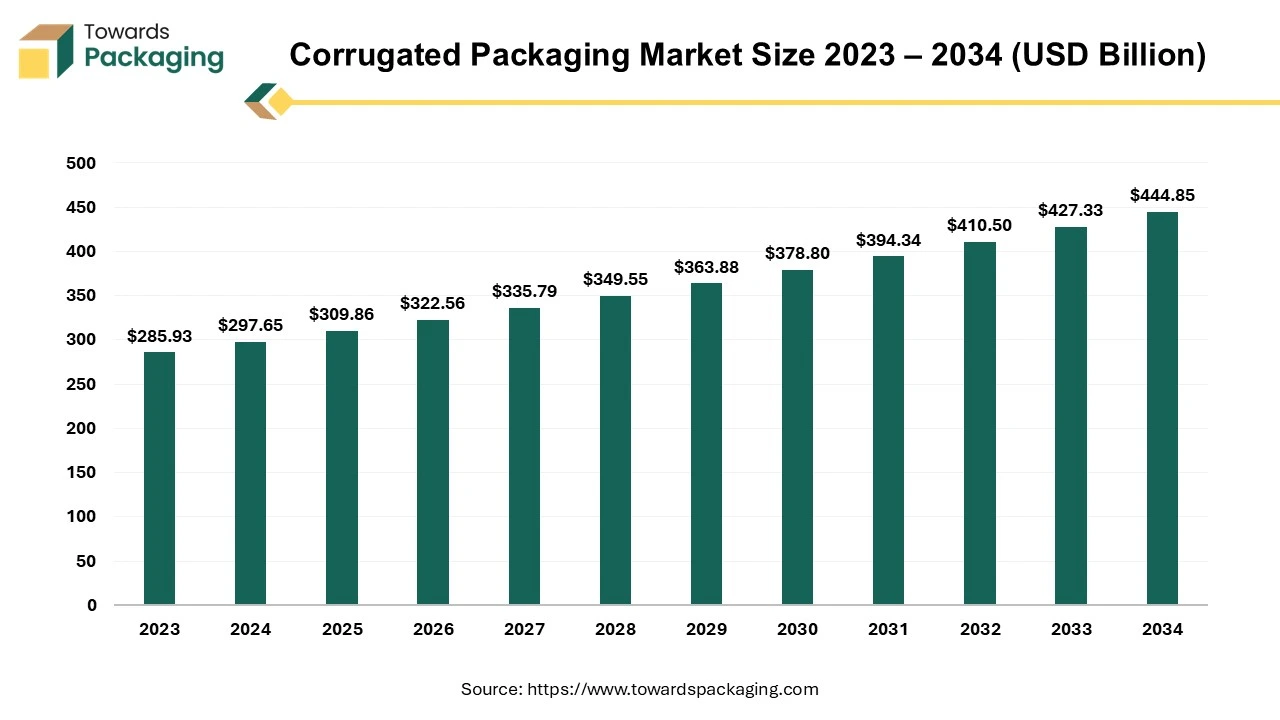
Corrugated packaging refers to a type of lightweight, durable, and eco-friendly packaging manufactured from corrugated fiberboard, which consists of a fluted (wavy) middle layer sandwiched between two flat linerboards. This structure provides strength, impact resistance, and cushioning, making it ideal for shipping, storage, and product protection. Corrugated fiberboard is made up of three main components: liner board, fluting (Medium), and adhesives. The key benefits of corrugated packaging have been mentioned here as follows: strength, durability, cost-effective, lightweight, and versatility.
The global corrugated boxes market is projected to reach USD 283.02 billion by 2034, expanding from USD 180.26 billion in 2025, at an annual growth rate of 5.14% during the forecast period from 2025 to 2034. Increasing trend towards sustainable packaging is significant factor anticipated to drive the growth of the corrugated boxes market over the forecast period.
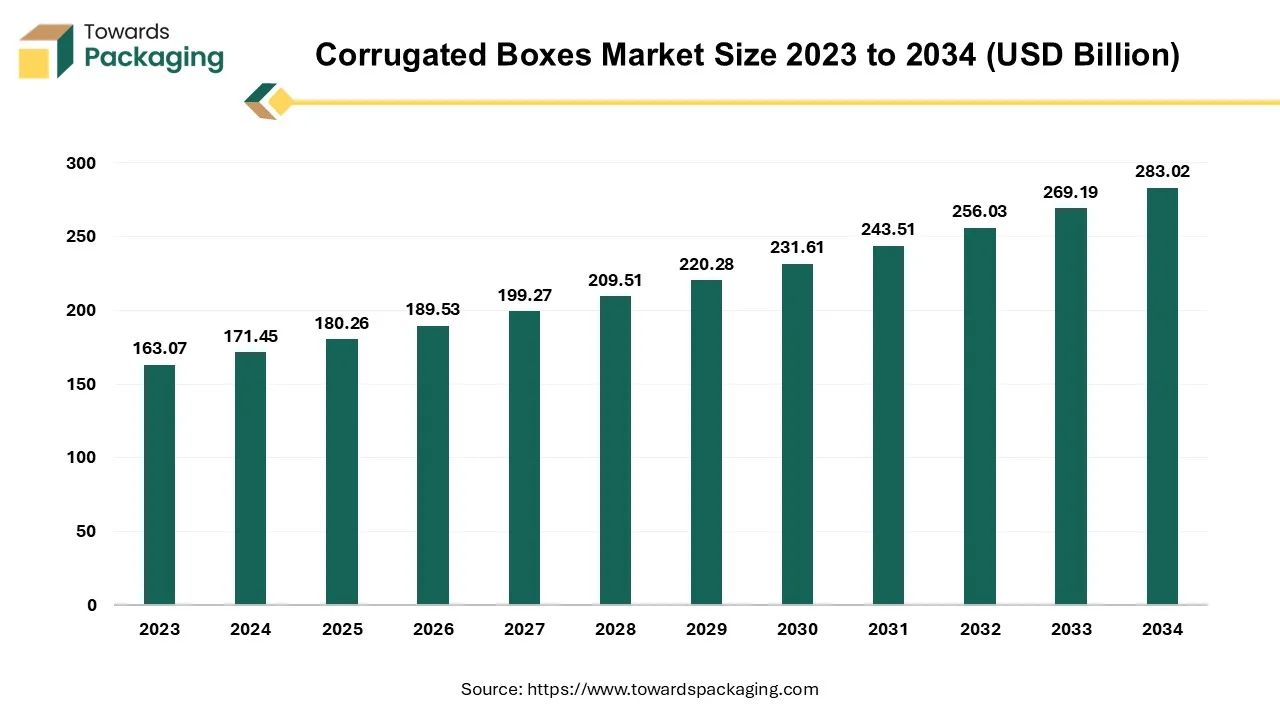
A corrugated box is a disposable container with three layers of material on its sides an outside layer, an inner layer, and a middle layer. When weighted materials are placed inside a corrugated box, the intermediate layer, which is fluted is designed in stiff, wave-shaped arches that act as supports and cushions. The process of aligning corrugated plastic or fiberboard (also known as corrugated cardboard) design elements with the functional, processing, and end-use requirements is known as corrugated box design. Packaging engineers strive to keep overall system costs under control while satisfying a box's performance criteria.
The non-corrugated boxes market is forecast to grow from USD 72.37 billion in 2025 to USD 138.74 billion by 2034, driven by a CAGR of 7.5% from 2025 to 2034. Due to rising trend of the fancy gift boxes the demand for the non-corrugated boxes increased which is estimated to drive the growth of the non-corrugated boxes market over the forecast period.
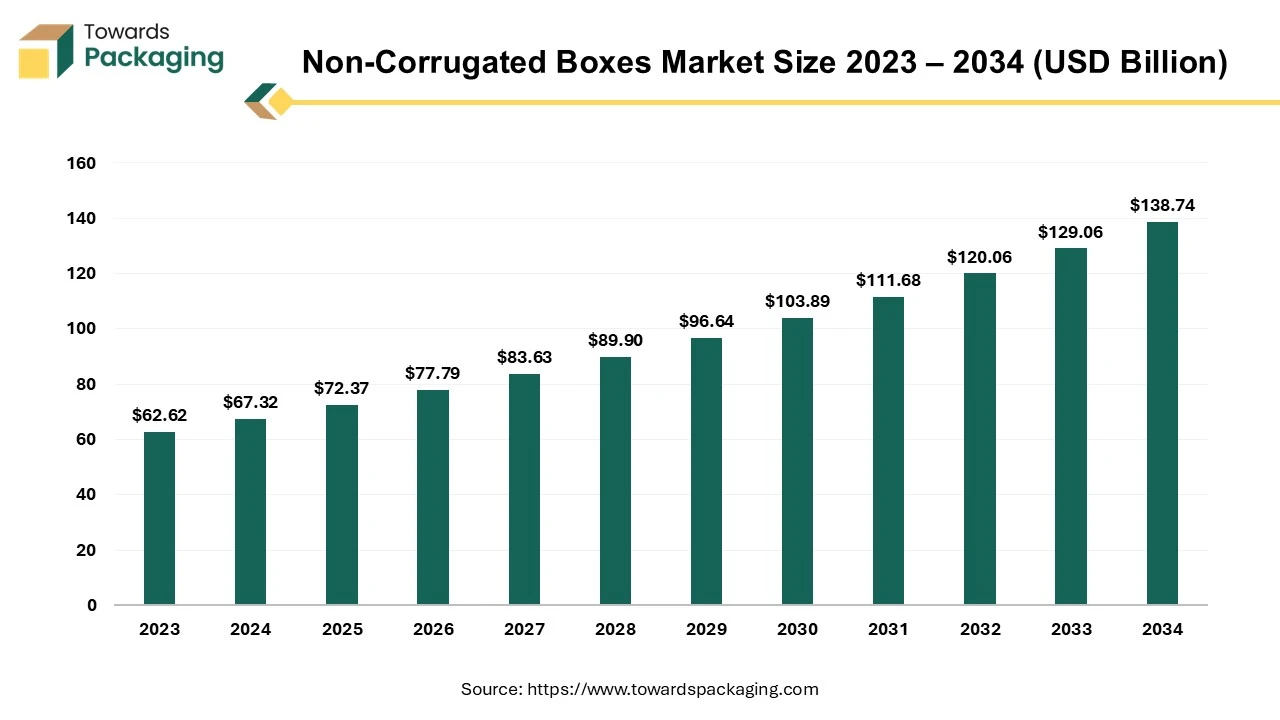
A non-corrugated box is a type of packaging box that does not have the fluted or ribbed layer found in corrugated boxes. Non-corrugated boxes are typically made from a single layer of material, such as cardboard, paperboard, or plastic. They lack the internal layer of fluted paper that corrugated boxes have. Common materials used for manufacturing non-corrugated boxes is paperboard, plastic, and cardboard among others. Plastic is in non-corrugated boxes manufacturing for meeting more durable and moisture-resistant packaging needs. Non-corrugated boxes are usually less durable than corrugated boxes because they lack the additional layer that provides cushioning and strength. They are often lighter, which can be beneficial for reducing shipping costs.
The global corrugated fanfold market is expected to grow from USD 6.83 billion in 2025 to USD 9.59 billion by 2034, registering a compound annual growth rate (CAGR) of 3.85% during the forecast period. This market expansion is primarily attributed to the rising demand for sustainable, cost-efficient, and customizable packaging particularly across e-commerce, logistics, and retail sectors. According to Smithers, the increasing shift toward on-demand packaging and right-sizing solutions continues to drive the adoption of corrugated fanfold among packaging manufacturers.
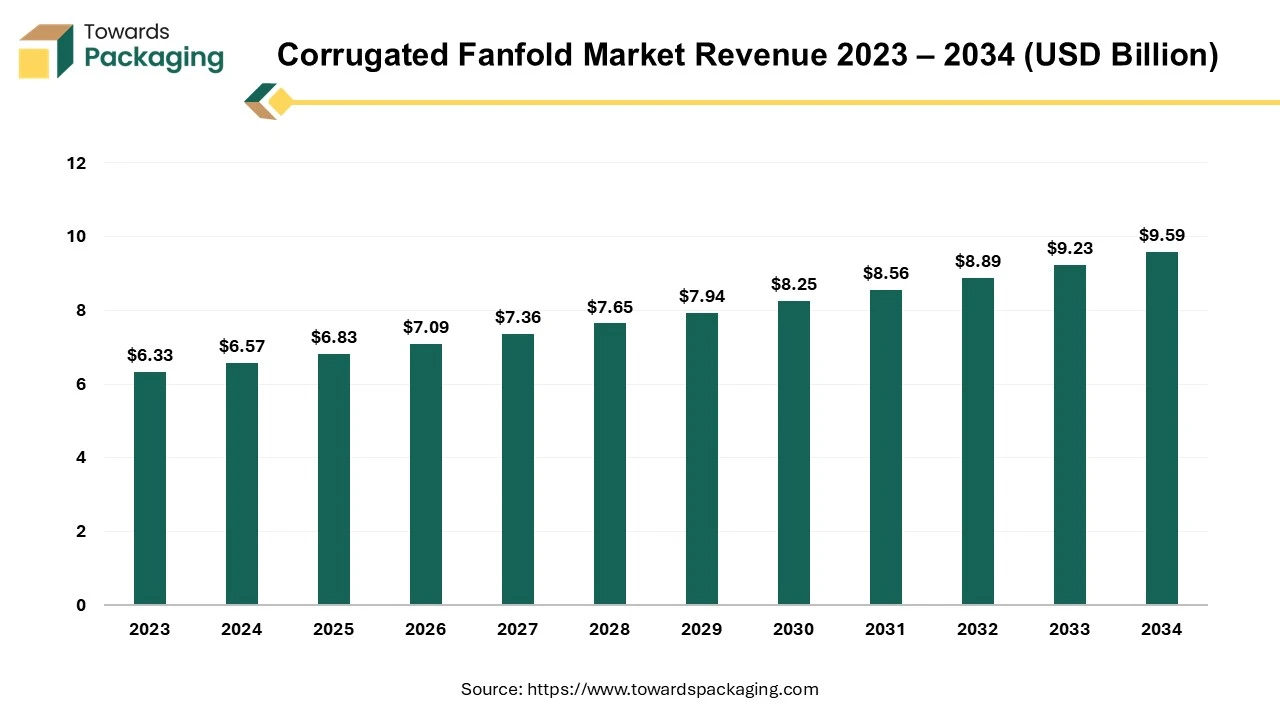
The market proliferates due to the rising e-commerce sector and the requirement of shipping & logistics where the safe and durable packaging of products is required. There is an increasing demand for sustainable packaging among consumers and strict government guidelines result in the growth of corrugated fanfold market development.
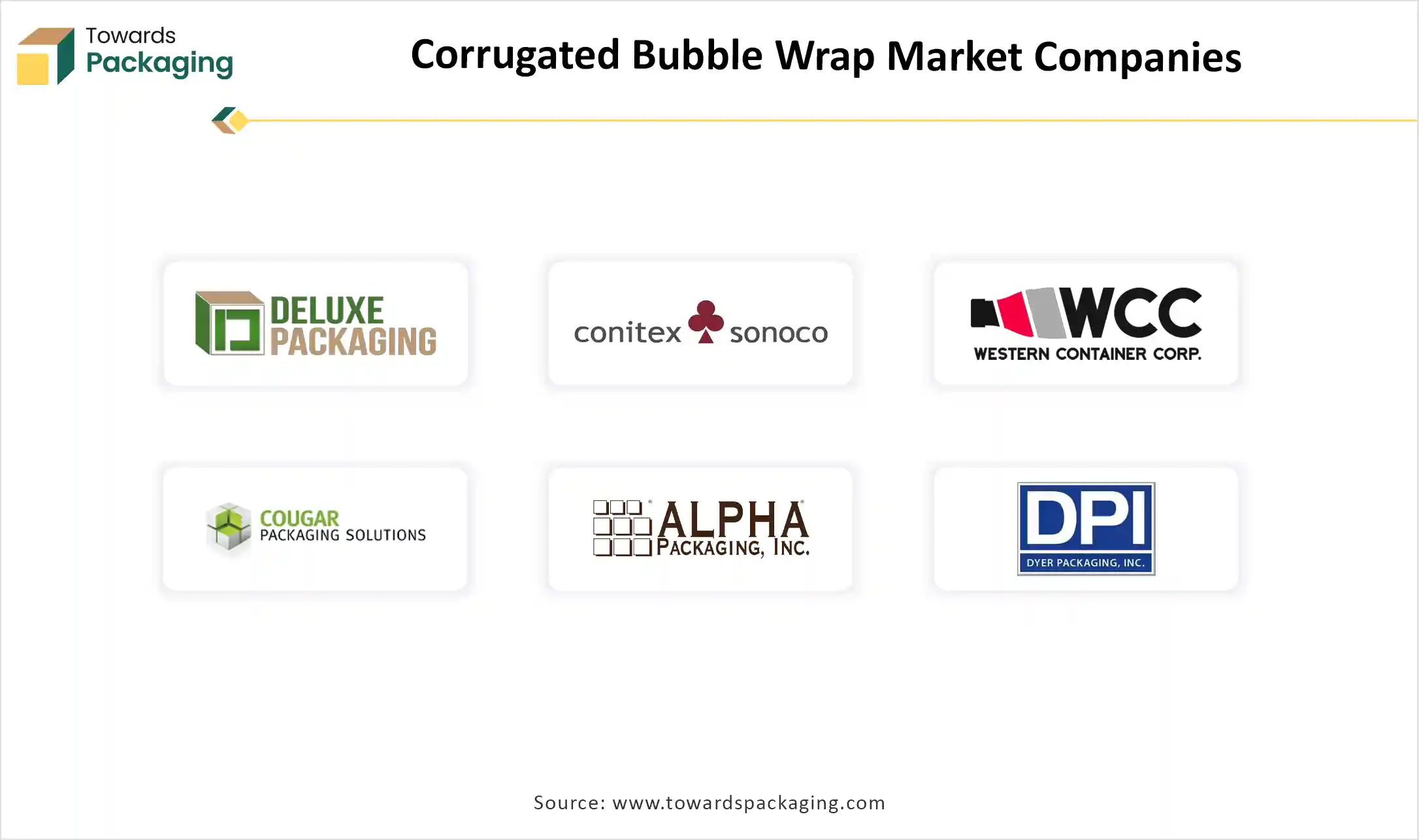
By Product Type
By End-Use Industries
By Region
December 2025
December 2025
November 2025
November 2025